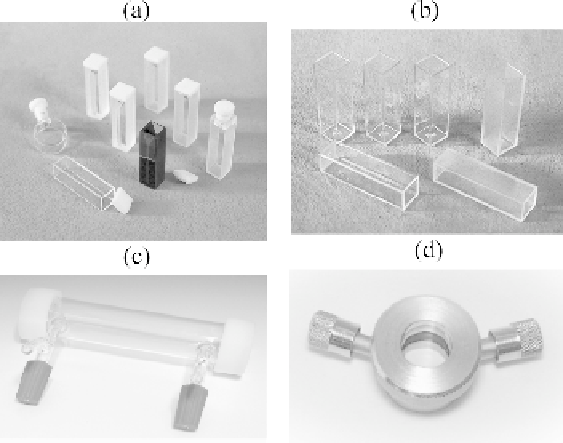Environmental Engineering Reference
In-Depth Information
Always select
l
max
for a maximum sensitivity. Some UV-visible spectro-
photometers have filters in the light paths. Make sure that the right filter is
selected for that particular wavelength.
Unlike IR, only liquid samples are allowed for UV-VIS. Any solid or
colloidal particles must be removed before UV-VIS chemical analysis.
Always keep in mind the linear analytical range of the particular methods.
For the visible range spectrophotometer, when absorbance (A
) is greater
than 0.8-0.9, it is always better to dilute the sample first. If
A
is too low,
such as less than 0.05, a large sample amount is needed whenever
possible.
8.4.2 Sample Preparation for Infrared Spectroscopic
Analysis
Sample preparation for IR analysis is unique and is the key to acquire a good
spectrum. Always keep in mind the useful IR range (infrared transmitting properties)
of the materials used in sample preparations.
IR can analyze samples in various forms—gas, liquid, or solid (Fig. 8.18c):
Gas samples
: Usually a long path cell is needed to maximize the sensitivity
(Beer's law), ranging from 10 cm (high concentration) to 20-100 m
(low concentration). The standard window material for gas cell is KBr.
Figure 8.18
Sample cells for UV, visible and IR: (a) UV quartz cuvettes, (b) Disposable cuvettes for
visible light, (c) IR cell for gas samples, and (d) IR cell for liquid samples. Courtesy of
Sigma-Aldrich Co. (a and b); Courtesy of Bruker Optics Inc (c and d)

Search WWH ::

Custom Search